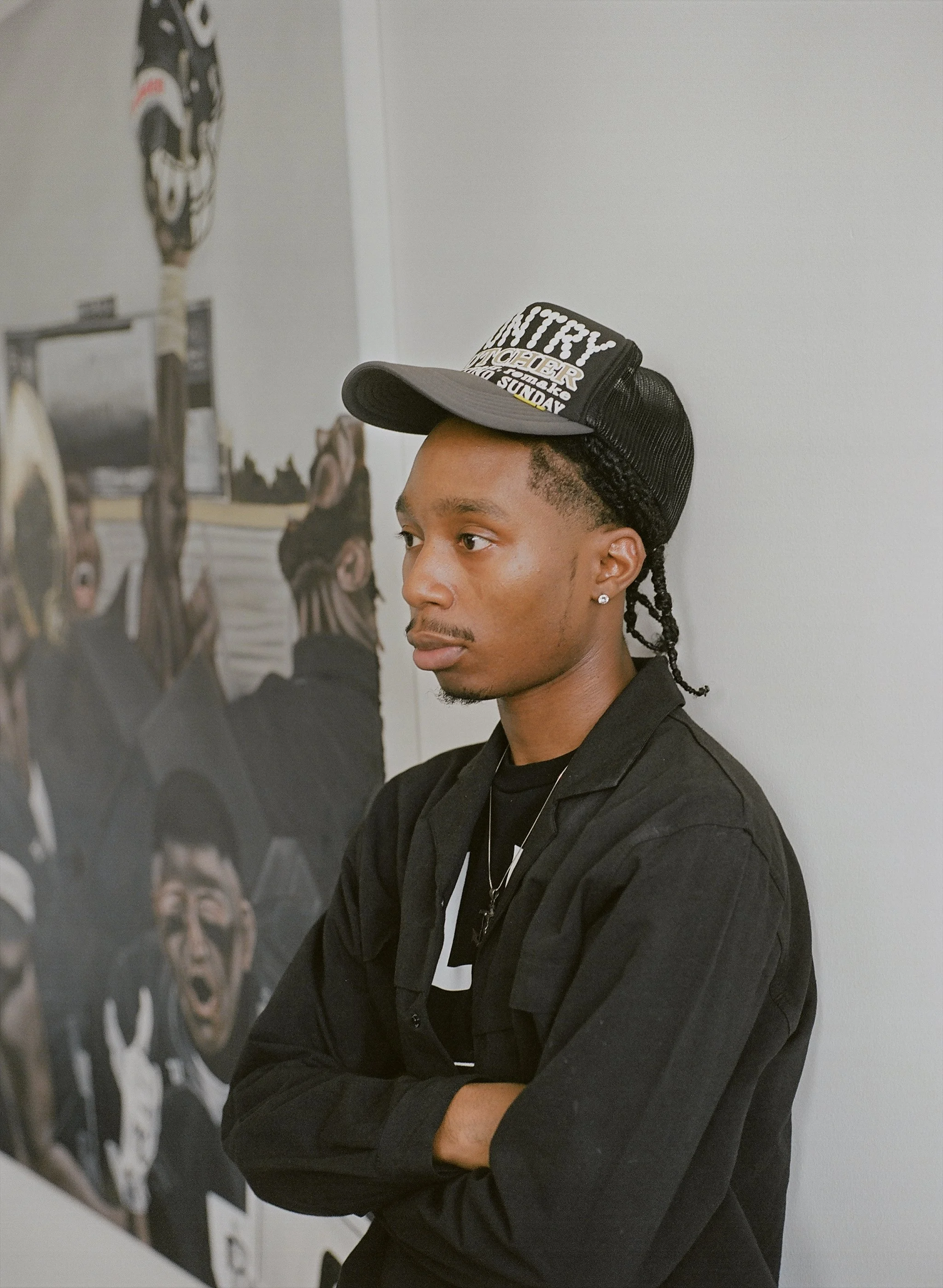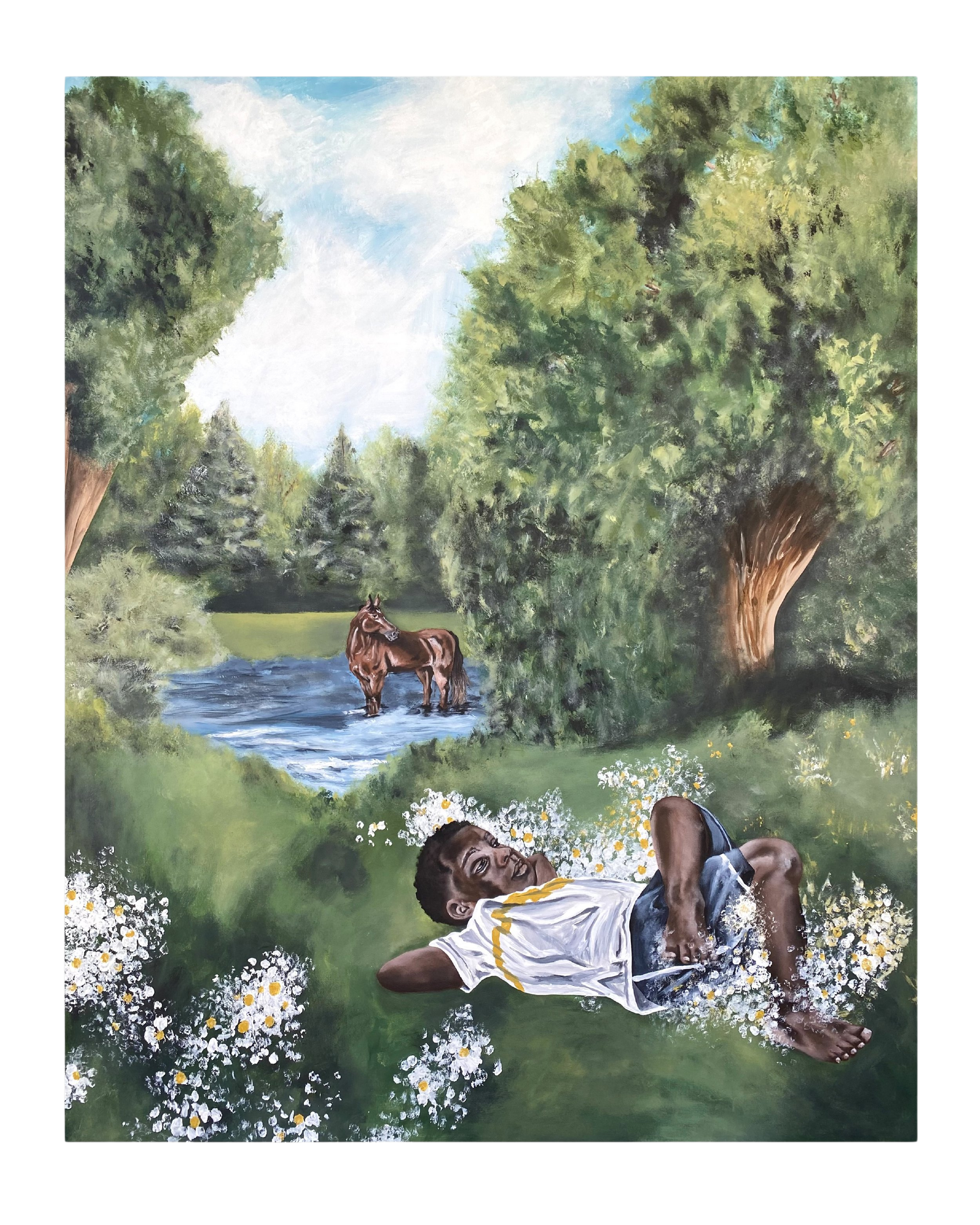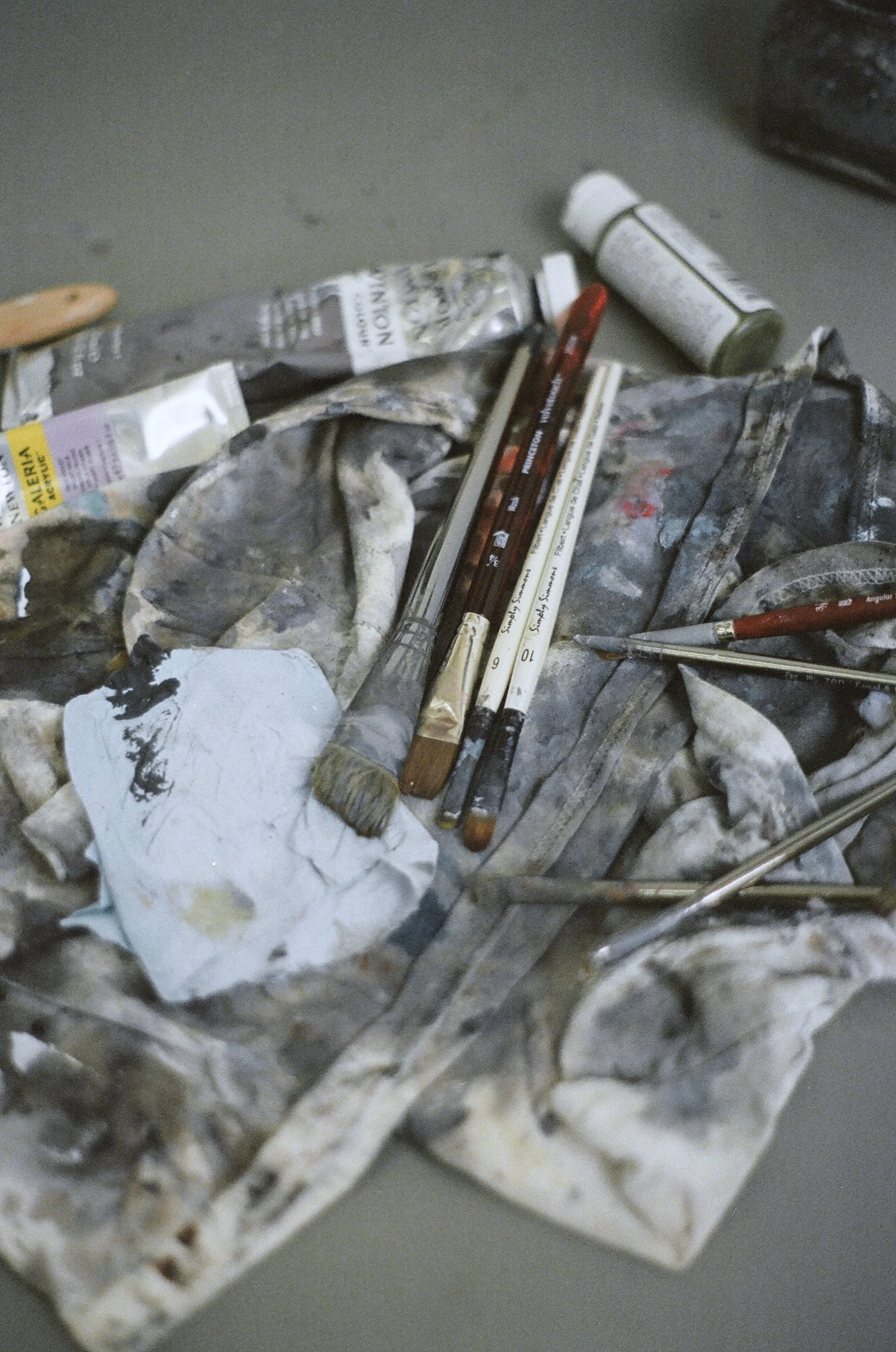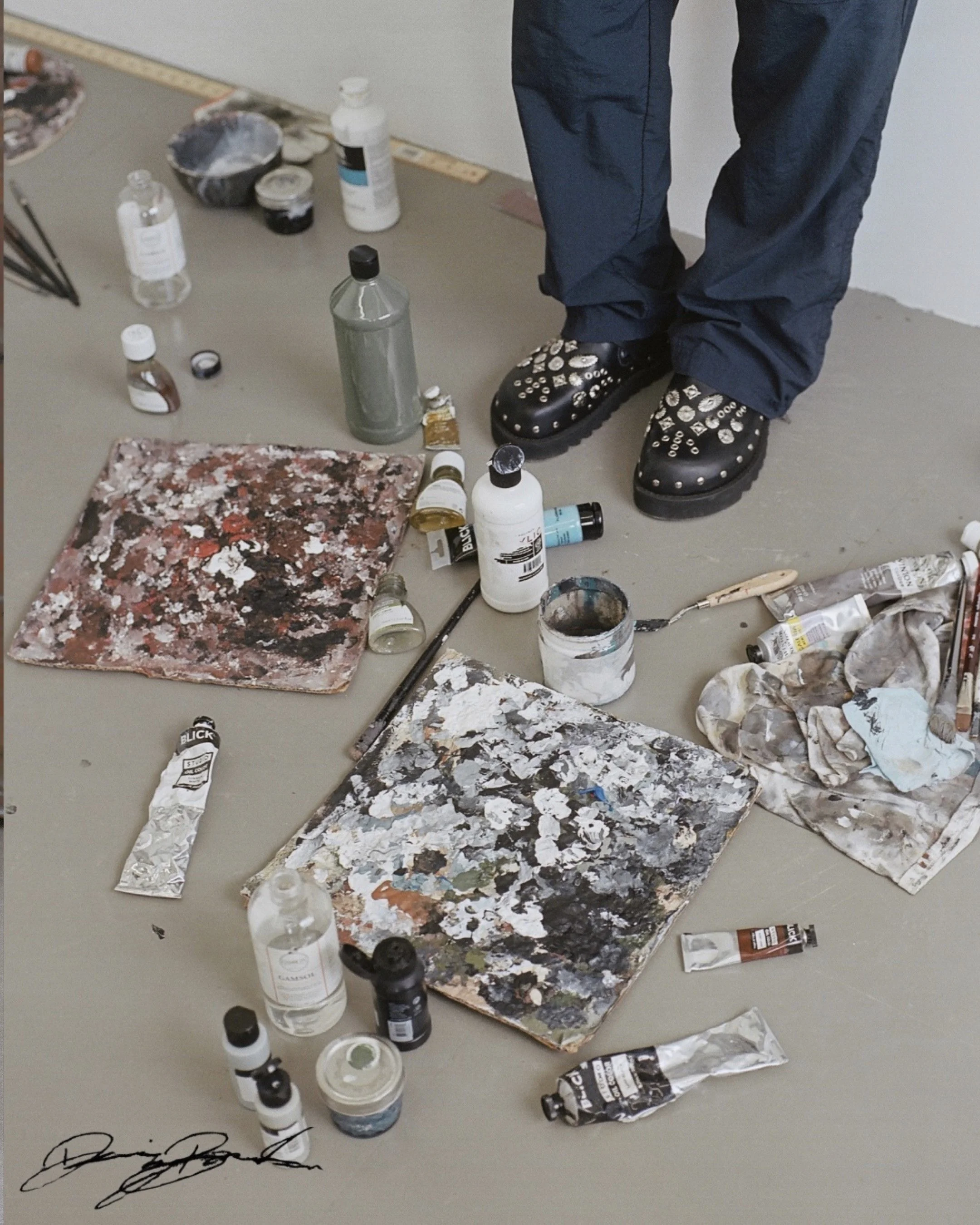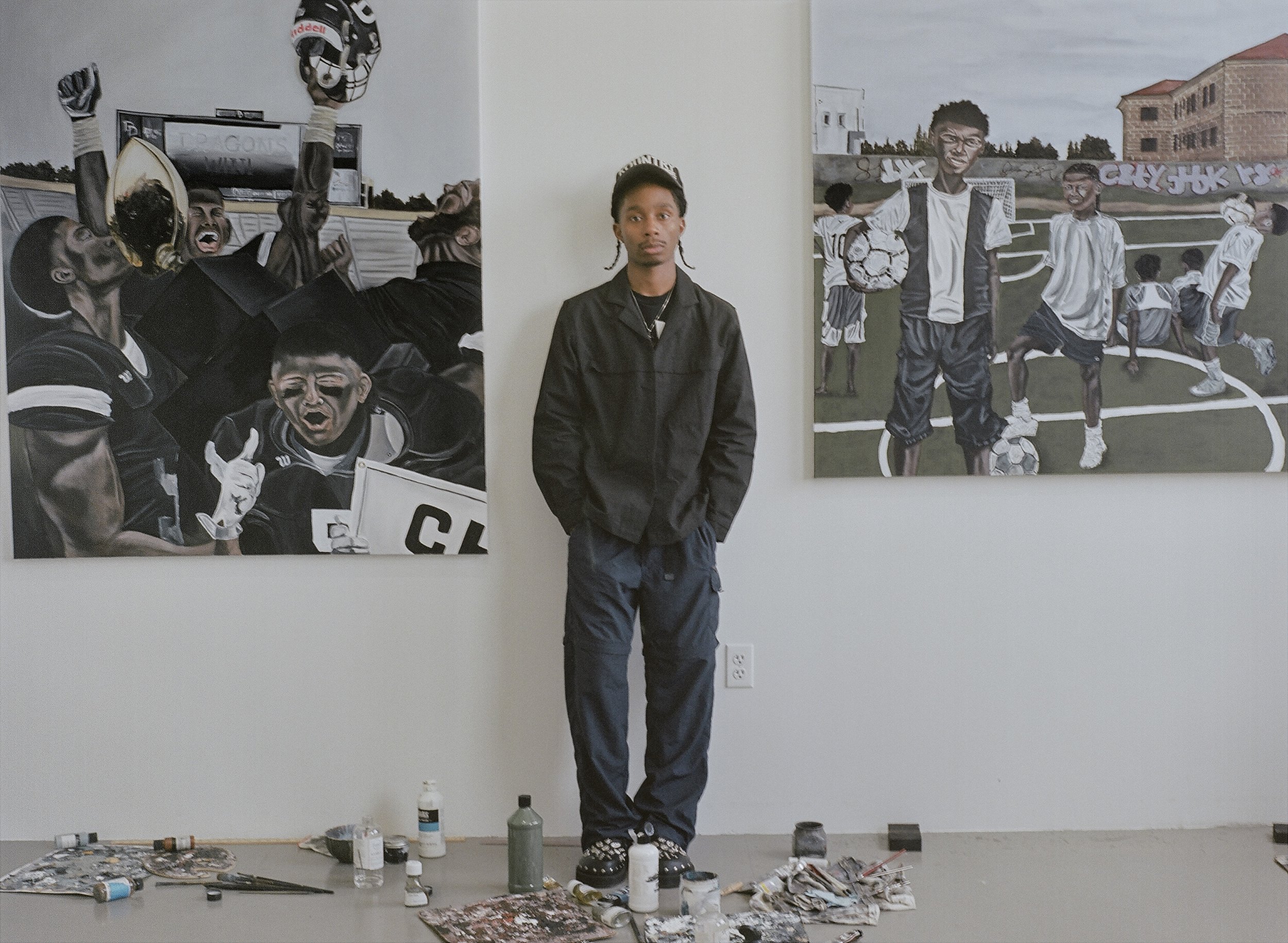
Deezy’s dream
Central to Davariz Broaden's artistic practice is a celebration of his personal growth, creative freedom, and relentless pursuit of innovation. His transformation from someone initially disinterested in drawing to a celebrated painter reflects a journey of perseverance and artistic discovery. Drawing heavily from his background in fashion design at Kent State, Broaden’s creative process involves mood boards, digital collages, and a keen eye for color and composition. His pieces not only tell vivid stories but also offer viewers a serene and contemplative experience.
R–D: What makes you a ROUGH—DRAFT?
Broaden: I didn’t go to school to become a painter, so everything is on the fly. I feel like I’m learning every day. Without traditional training, there's a lot of trial and error. Over time, I’m finding what works best for me.
R-D: How did you even start painting?
Broaden: I hated drawing initially and even got a D in my first college art class. But then my fashion drawing teacher, Joanne Arnett showed us a bunch of artists and we had to replicate our favorite style; I picked Jacky Marshall. Her free-flowing style resonated with me. Then COVID happened, and I started doing digital fan art, which eventually ran its course. I had 2 canvases and I was going to use them for screen printing t-shirts. Instead, I ended up painting on them and posted them on social media. Everything changed after that.
R-D: How was studying Fashion Design at Kent State? Did it influence your path to becoming a painter?
Broaden: Yeah, Kent helped me become an artist. I see myself as a designer first and a painter second. My painting process is very design-based, and I still use the same muted colors I did in school.
R-D: How’s life in the Lantern? Has working there changed the way you create?
Broaden: Life here is great. Coming to the Lantern every day is very motivating. I used to have a home studio, which made it tough to get out and paint. Working next to a bunch of other talented artists helps a lot too.
R-D: How do you navigate periods of creative block or artistic uncertainty?
Broaden: I had a strong creative block after my first solo show with Louis Buhl. I couldn’t stay focused. I’d work for an hour, then stop. So, I decided to just get out of the studio. After that show, I told myself, "You just gotta go outside."
R-D: Why do you believe jazz serves as a guiding force in your process?
Broaden: Jazz helps a lot with my process, maybe because I’m not caught up on lyrics and art is a feeling. Even in school, there was always music in the background. Jazz allows me to enter a flow state. It helps me get in the groove, then I can play anything. It just helps me focus.
R-D: Is there an unexplored theme or medium you’re eager to delve into in your future work?
Broaden: Sculpture! I’ve gained an interest in sculpting. I have a lot of ideas I want to bring to life. I’m focused on childhood and nostalgia.
R-D: Do you feel compelled to articulate the meaning behind your artwork?
Broaden: I do feel it's necessary to explain the meaning or the story behind my paintings. The meaning is authentic to who I am as a person. I’m always interested in feedback.
R-D: Do colors play a significant role in conveying emotions in your paintings?
Broaden: Colors tell a story for me. Maybe because I’m trying to create a soft, intimate feel. I spend hours trying to figure it out. Being able to tell a story with color is a strong focus of mine.
R-D: Can you describe the journey of your creative process, from inception to completion?
Broaden: My process comes back to design, which Kent helped a lot with. In design school, we created mood boards. My paintings combine photo references, old family photos, and freestyling, which I collage digitally first. Then it goes onto the canvas.
I look at space on a canvas like an interior designer, using my resources to fill that space.
“I work with theory, and everything is a branch of one thing. If I have an idea, there are usually 10-20 others that stem from it. Finishing one thing usually isn’t the end of it.”
R-D: Have you ever felt your work was misinterpreted, and how do you handle such situations?
Broaden: My mom sometimes looks at a painting and thinks it’s of me and my brother. While the stories are authentic, the figures are random. These aren’t real people, but the story is true.
R-D: Do you often share your initial concepts with others?
Broaden: Anyone interested in my work deserves to know how it came about. If you’re interested, I’ll share how I created it.
R-D: Who are your mentors, and how have they played a role in your career?
Broaden: My mentors are family, the Library Street Collective team, Louis Buhl, and artists like Paul Verdell and Tyrrell Winston.
R-D: Why does nature play such a pivotal role in your art?
Broaden: Nature will always be in my work and is important to me because it’s inviting. It’s a place where we can all go and be free from everything. I’m trying to create this sense of peace. The best way to get peace for me is in nature. That’s why it’s always in my works- and it will always be in my work.
R-D: How did you celebrate after a big showing like Louis Buhl?
Broaden: It was the day after my birthday. A lot of friends came from out of town to see the show. The turnout was great, and the body of work itself was centered around the theme of celebration. It was my first time showing a large body of work, and everything was amazing.
R-D: If you weren’t an artist, what alternative career path might you have pursued?
Broaden: Fashion designer or basketball player (though I’m not 6 feet tall). Art has recently become my main focus, but I'm still working on design and other projects. I'm enjoying this time, knowing that my journey with art will eventually lead me deeper into other things.
R-D: How do you decide on the titles for your pieces?
Broaden: I usually know what I want to do before I start working. I go through waves of inspiration before developing digitally. Sometimes I know the titles right off the bat.
R-D: What advice would you give to someone who wants to start painting?
Broaden: Make sure the story is authentic to you. Because you’ll forever have work. You’ll forever be inspired if it’s authentic to who you are. Enjoy the process because painting can be tedious. You can’t cheat it. Know that everything won’t be a gallery show every month. You’ve got to enjoy the journey more than the idea of actually being a painter.
R-D: Who are two IG artist accounts everyone should be following?
Broaden: @tyrrellwinston and @paulverdell.

